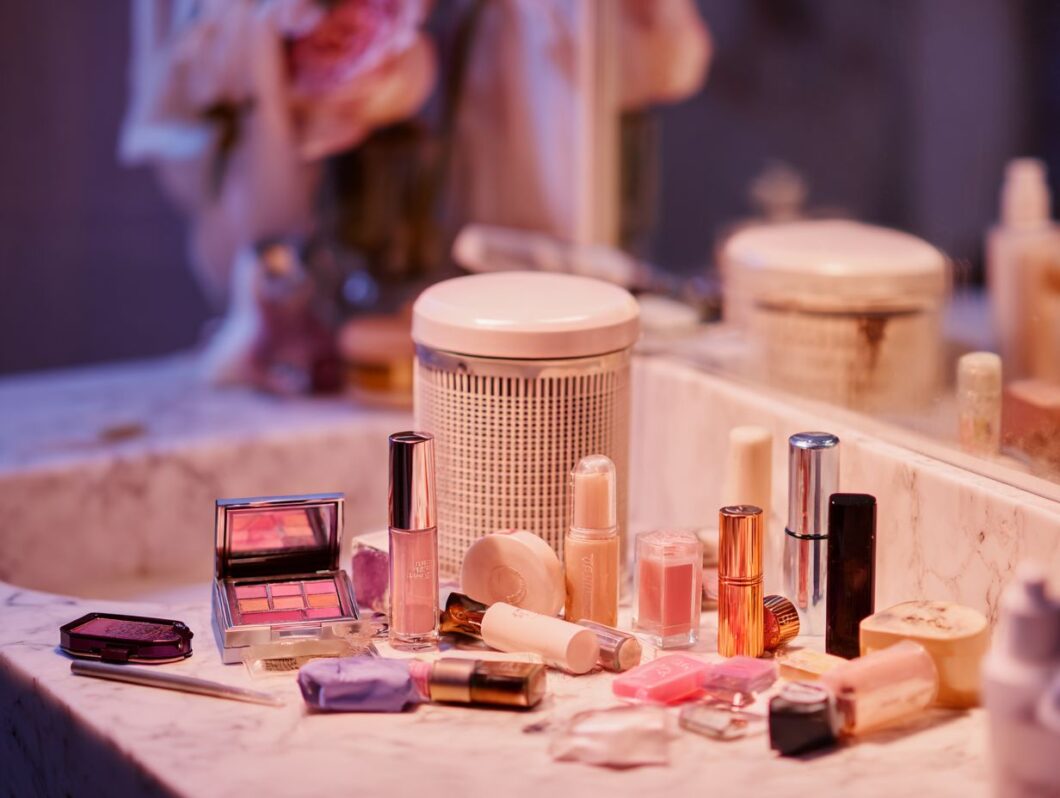Are you unknowingly using expired makeup that could harm your skin? Understanding makeup expiration dates is crucial for maintaining healthy skin health and ensuring your cosmetic products, like mascara and eyeliner, are safe to use. In this guide, we’ll explore which cream products need to be tossed and when, helping you navigate the often confusing world of makeup safety and dermatologist recommendations. Say goodbye to expired makeup and hello to a refreshed beauty routine with a thorough makeup clean out!
Key Takeaways:
Understanding Expiration Dates
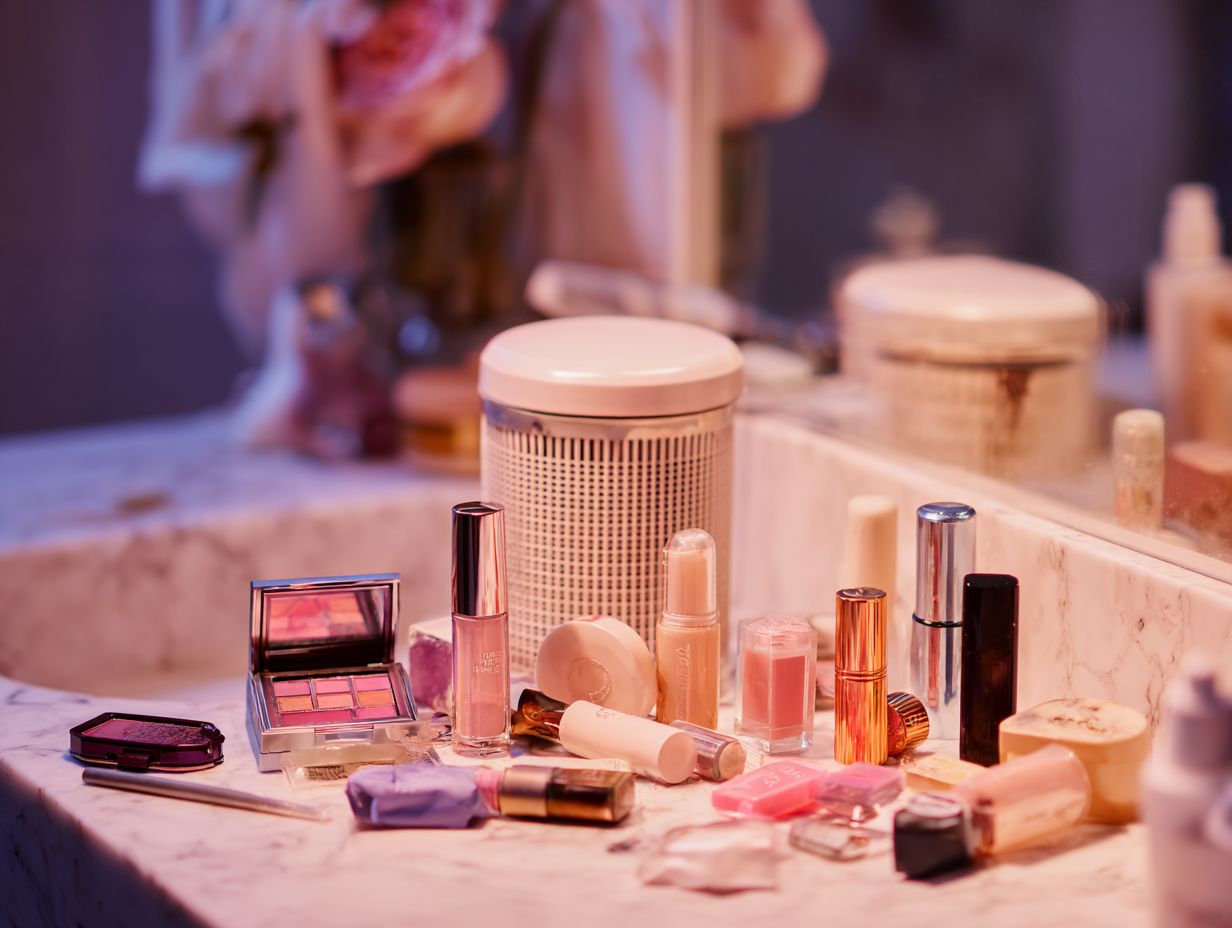
I view expiration dates on cosmetic products as essential guidelines that ensure both safety and effectiveness.
These dates help to clearly differentiate between the product’s shelf life and its actual usage period, considering factors like bacteria growth.
What Do Expiration Dates Mean?
An expiration date on a makeup product signifies the timeframe during which the product remains safe and effective for use, typically ranging from 1 to 3 years after its manufacture. I understand that manufacturers establish these expiration dates based on ingredient stability and the potential for contamination.
For example, I’ve noted that liquid foundations generally have a shelf life of about 1 to 2 years, whereas powdered products can remain valid for up to 3 years in proper beauty packaging.
With products like mascara, it’s important to discard them after 3 to 6 months, as bacteria can proliferate in these types of liquid formulas. Adhering to these guidelines is essential, as using expired items can result in skin irritations or infections.
I always make it a point to check the packaging for specific expiration dates and recommend storing makeup in a cool, dry place to prolong its lifespan and prevent acne or perioral dermatitis.
Differences Between Expiration Dates and PAO
Unlike hard expiration dates, PAO (Period After Opening) figures indicate how long a product remains safe to use after it has been opened, typically ranging from 6 months to 2 years. The PAO is usually represented by a jar icon with a number inside, which signifies the number of months a product is effective post-opening, crucial for maintaining its health benefits. It is common to see PAO labels on skincare products, such as certain moisturizers and liquid foundations.
For example, a well-known cream may display `12M’ on its packaging, indicating that it is effective for one year once opened. Understanding this concept allows me to gauge when to replace my products to ensure optimal effectiveness.
This knowledge is crucial for maximizing the benefits of active ingredients while mitigating the risk of using a compromised formula.
Common Makeup Products and Their Lifespan
I understand that different types of makeup products have varying lifespans, which are influenced by their formulations and packaging methods, such as those used by 100% PURE and Credo Beauty.
Foundations
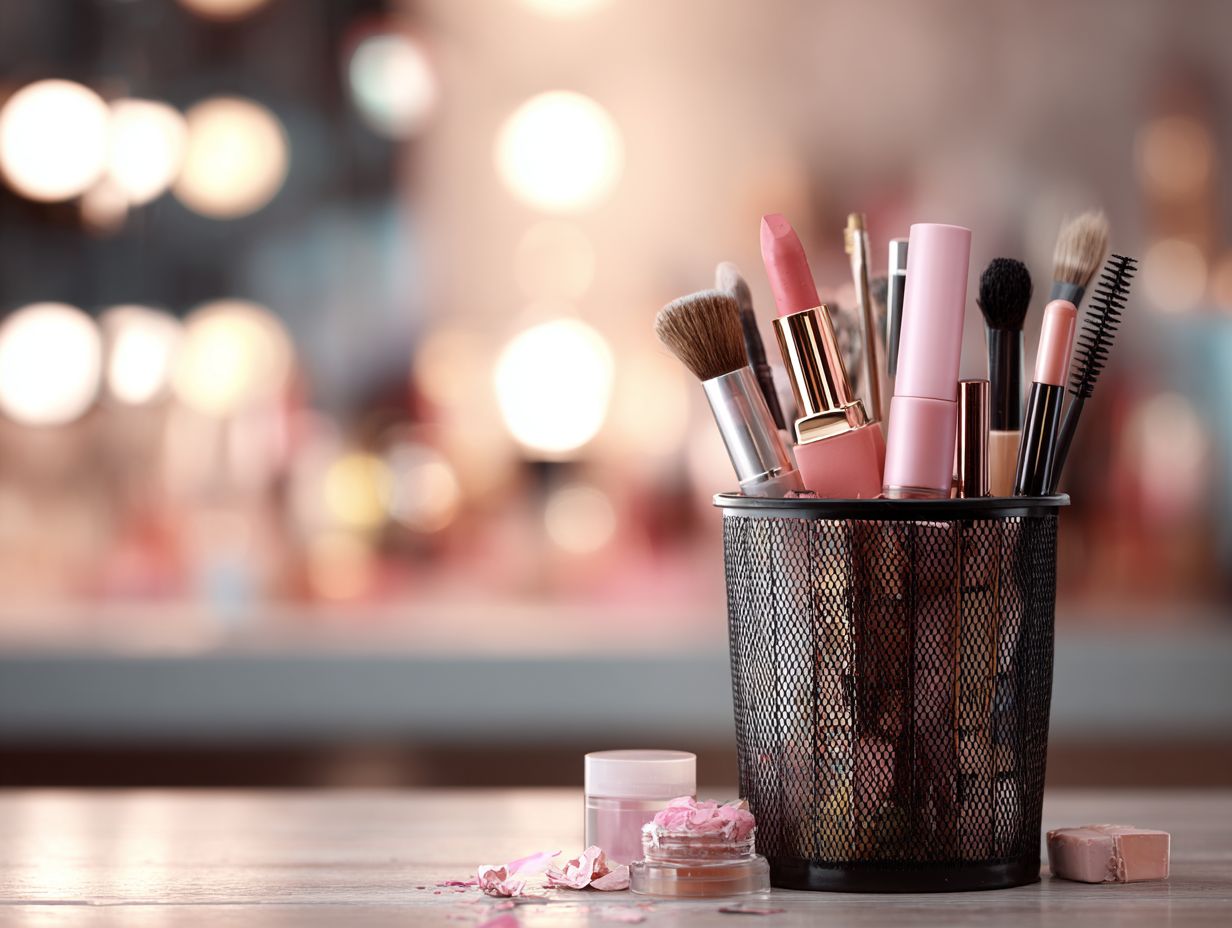
Liquid foundations generally have a lifespan of 1-2 years, depending on their ingredients and the conditions in which they are stored. To maximize the longevity of my liquid foundation, I make it a point to keep it in a cool, dry place, away from direct sunlight. I also avoid exposing it to fluctuating temperatures, as heat can compromise the formulation.
I always ensure to close the cap tightly after each use to prevent air exposure, which can lead to oxidation and spoilage. Additionally, I regularly check for any changes in texture or smell, as these can indicate that the product is no longer usable.
By adhering to these storage guidelines, I can help ensure that my foundation remains effective for as long as possible.
Lipsticks
Lipsticks typically have a shelf life of about 1-2 years, but I can often identify signs of expiration sooner through noticeable changes in texture or color.
To maintain the quality of my lipsticks, I store them in a cool, dry place, away from direct sunlight. I understand that brands like Sephora recommend regularly checking my lipsticks; if I notice they have become dry, flaky, or emit an unusual odor, it’s prudent to discard them.
I find that using a lip brush or stainless steel applicator can minimize contamination, which helps extend the usability of my products. For optimal freshness, I make it a practice to rotate my collection periodically, using the older products first.
By following these practices, I ensure my lipsticks remain vibrant and effective for as long as possible.
Mascaras
Mascaras are among the most perishable makeup products, typically lasting only 3 to 6 months due to the risk of bacteria growth. Using expired mascara poses risks such as eye infections, irritation, and allergic reactions, a common concern highlighted by dermatologists.
To determine when it’s time to dispose of my mascara, I look for several key signs:
- if the formula becomes dry or clumpy,
- if there’s a noticeable change in smell,
- or if the wand appears discolored.
Additionally, if I experience an eye infection while using mascara, I understand that it’s best to discard it immediately.
To stay organized, I make it a point to mark my calendar when I open a new tube, which serves as a reminder to replace it every three to six months. This practice helps ensure both my safety and the integrity of my makeup routine, as advised by healthcare technology experts.
Signs Your Makeup Has Expired
Identifying signs of expired makeup is essential for mitigating potential health risks and ensuring that my beauty routine remains safe and effective, as discussed in Vogue January-2019.
Changes in Texture
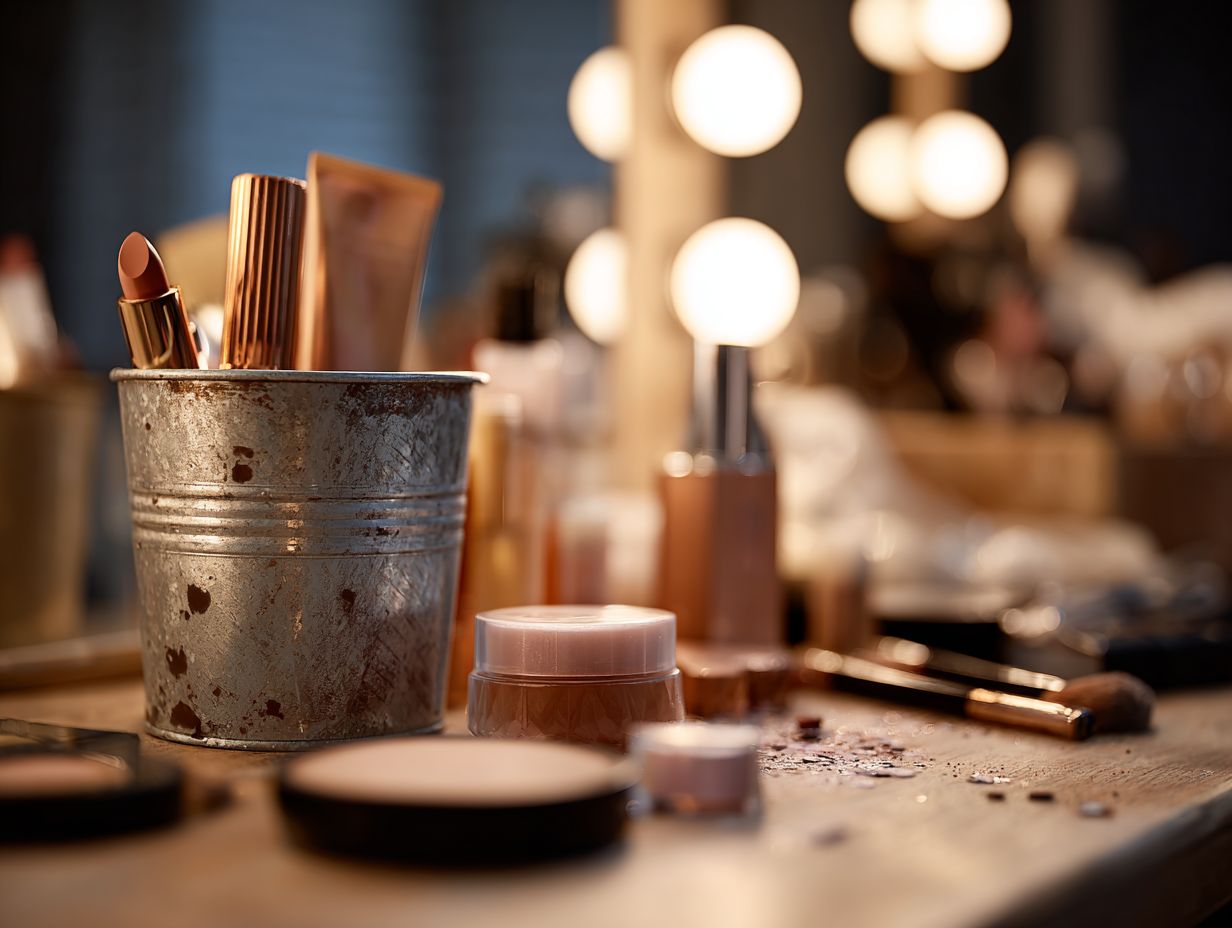
I recognize that a significant texture change, such as clumping or separation, is a clear indication that my makeup has expired.
With cream products, I may observe an oily film on the surface or a noticeably thinner consistency upon application, which indicates that the formulation has broken down.
For liquid foundations, they might become sticky or develop uneven patches on the skin, ultimately impacting the final appearance. To ensure that I am using fresh products, I make it a point to regularly check the expiration dates.
I also find it beneficial to invest in a foundation testing tool like the ColorIQ, as it can help me accurately match my skin tone, thereby enhancing both application and overall appearance.
Additionally, I understand that properly storing makeup in a cool, dry place can significantly extend its shelf life and prevent the growth of unwanted microbes.
Unusual Smells
If I notice that my makeup emits an unusual or rancid smell, I understand that it is a clear indication that the product is no longer safe to use.
Certain ingredients in makeup can develop odors over time, particularly those with organic compounds or less stable formulations. For instance, cream blushes may sour due to their moisture content, while liquid foundations can oxidize, resulting in an unpleasant scent.
I find it essential to regularly check my products, especially those that are nearing their expiration date. Common offenders in my makeup collection include any product with a whipped texture and those that contain oils, such as jojoba or coconut oil.
To maintain freshness, I make it a point to store my makeup in a cool, dry place and replace items every 6-12 months.
How to Properly Dispose of Expired Makeup
Proper disposal of expired makeup is essential not only for health reasons but also for environmental sustainability. To responsibly dispose of expired cosmetics, I begin by checking if any items are recyclable, considering the guidelines set by Pact Collective.
Many brands encourage recycling through initiatives like Pact Collective, which invites customers to return beauty containers for reuse.
For products that cannot be recycled, I consider utilizing local hazardous waste disposal services to ensure safe disposal, a method supported by organizations like Ulta. Additionally, I take advantage of ‘return to store’ programs offered by some retailers, which simplify the recycling process.
It is also important for me to review each product’s specific disposal instructions, as certain ingredients may require special handling.
Tips for Extending Makeup Shelf Life
Implementing a few straightforward strategies can significantly extend the shelf life of my makeup products while enhancing their safety, as recommended by leading beauty brands.
To begin with, I store my makeup in a cool, dry place away from direct sunlight, as both heat and moisture can deteriorate the formulas over time. I also prioritize cleanliness by ensuring that my applicators and brushes are washed weekly with gentle soap or a specialized cleaner to prevent bacterial growth.
Additionally, I make it a habit to seal products tightly after each use. Dermatologists advise regularly checking expiry dates and replacing items like mascara every three months to mitigate the risk of eye infections.
By adopting these practices, I can ensure that my makeup products remain fresh for a longer period.
Frequently Asked Questions
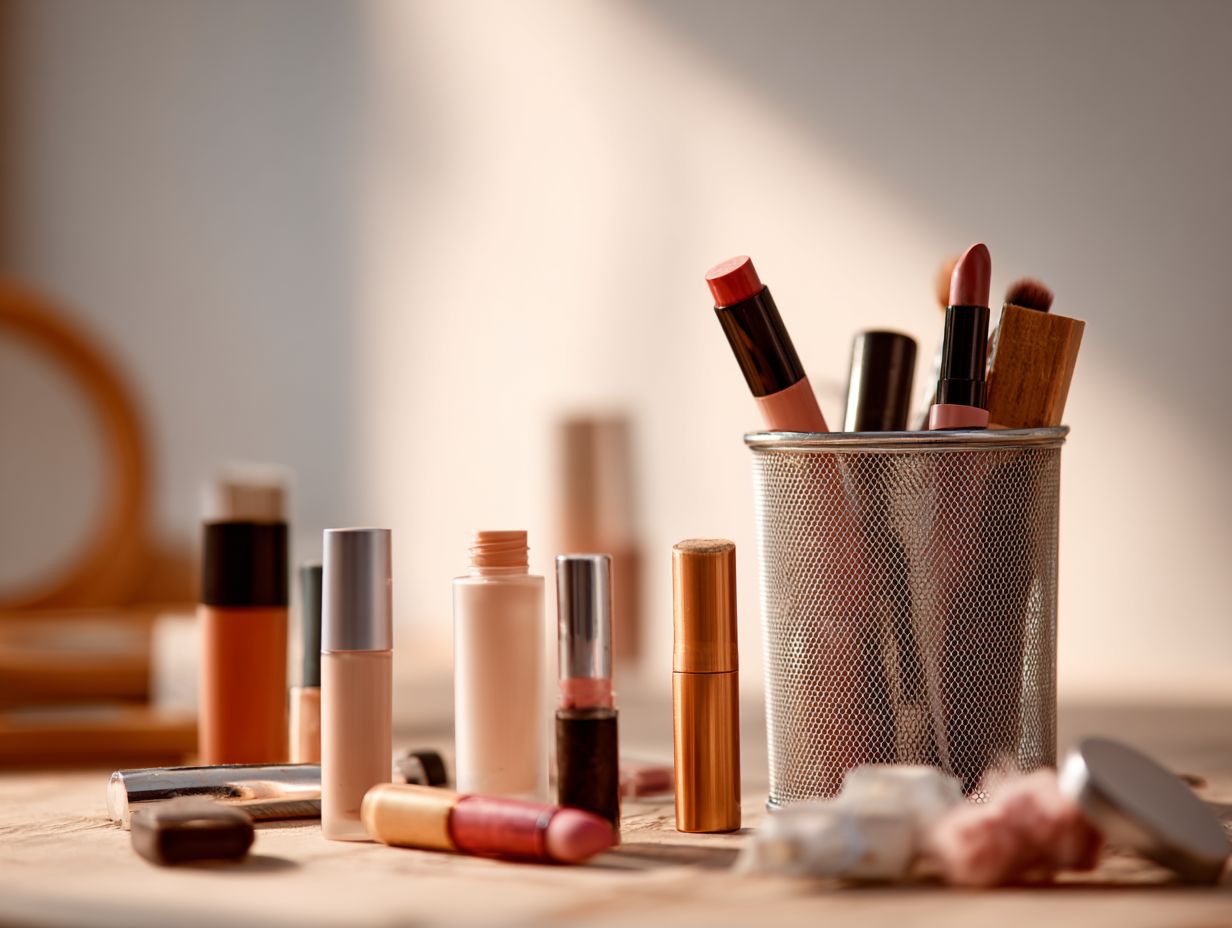
What is the shelf life of makeup products?
The shelf life of makeup products can vary depending on the type of product and its ingredients. Generally, liquid and cream products have a shelf life of 6-12 months, while powder products can last up to 2 years.
Why is it important to pay attention to expiration dates on makeup?
Expired makeup can harbor bacteria and lead to skin irritation or infection. It can also cause the product to break down and not perform as intended.
What are some common signs that indicate makeup has expired?
Some common signs of expired makeup, such as those found in plastic tubes, include changes in texture, color, or smell, as well as the separation of ingredients. If the product looks or smells different than when it was first opened, it’s time to toss it.
How can I make my makeup last longer with brushes and sponges?
To prolong the shelf life of your makeup, whether purchased from Sephora or Ulta, make sure to store it in a cool, dry place and avoid exposing it to direct sunlight or extreme temperatures. Also, be mindful of closing lids tightly to prevent bacteria from entering.
Can I still use expired makeup from brands like 100% PURE?
It is not recommended to use expired makeup as it may cause skin irritation or infection. It’s best to err on the side of caution and replace expired products.
Is it safe to share makeup products with others according to Vogue?
No, it is not safe to share makeup products with others as it can transfer bacteria and lead to potential infections. It’s best to use your own products and avoid sharing with others to maintain good hygiene.


